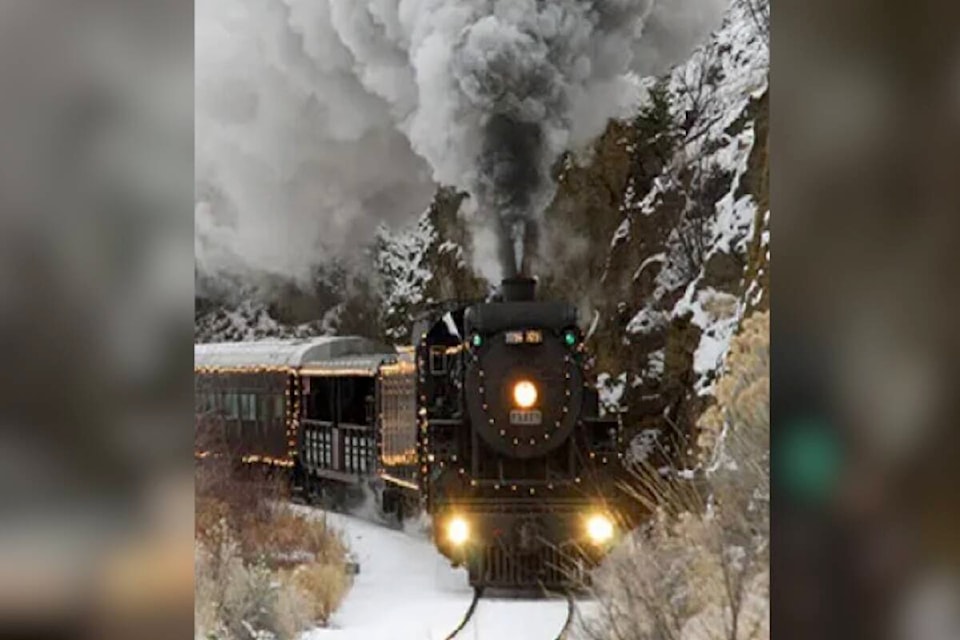A column by Bruce Uzelman
British Columbia at the end of the 19th century was a hotbed for the emerging railroad industry. Two large railway companies were particularly active here, the Montreal based Canadian Pacific Railway (CPR) and the Great Northern Railway (GNR) headquartered in Saint Paul, Minnesota.
In 1855, James J. Hill, a Canadian, moved to the U.S., gained valuable business experience and developed high level contacts, two in Canada: Donald A. Smith was the governor and principle shareholder of the Hudson Bay Company; George Stephen was president of the Bank of Montreal.
Hill, Smith and Stephen acquired a bankrupt railway in Minnesota in 1879. They changed the name to the St. Paul, Minneapolis and Manitoba Railway (StPM&M). Together, the Canadians worked to gain additional running rights for the StPM&M, greatly expanding its reach. It prospered under Hill.
Hill also acquired the Minneapolis and St. Cloud Railway in 1881. Its operations were very limited, but it held extensive land grants. In 1889, he changed its name to the Grand Northern Railway (GNR). He folded the StPM&M into the GNR. In 1893, the GNR’s mainline reached the Pacific Coast at Seattle. The GNR also built an extensive branch line system the length of their mainline.
In Canada, the CPR built its mainline to the Pacific shore in just four years (1881-1885). It was a stunning achievement. 2800 miles of track traversed some of the most difficult terrain encountered by any railway on the continent – the Canadian Shield in Ontario and the mountain ranges of B.C. Stephen and Smith were founding investors of the CPR. Stephen became its first president in 1881.
The CPR and the GNR were intense rivals. It was more than just business; it was personal. Hill was part of the original consortium which created the CPR. He sought to have a portion of the CPR routed through the U.S., but the man whom Hill had endorsed to manage construction for the CPR, William Van Horne, was firmly opposed. Hill angrily resigned as a director of the CPR in 1883.
Van Horne became president of the CPR in 1888. The stage was set for a colossal confrontation. The mining industry boomed in the Kootenays and the Boundary Country in the 1890s. Hill and Van Horne, both, saw extensive opportunities to transport ore, goods and people. And so, it began.
The first clash ensued when the GNR’s Kaslo and Slocan Railway reached Sandon, “the silver city,” in 1895, as did the CPR’s Nakusp and Slocan Railway. The GNR crew burnt down the CPR station.
As the economies of the Kootenay and the Boundary exploded, a tangle of independent railway charters emerged. Daniel Corbin’s Spokane Falls and Northern Railway (SF&NR) was one of the first. It began construction from Spokane in 1890, reaching Nelson in 1893. He also completed the Rossland and Red Mountain Railway to the American border, and linked it to his SF&NR in 1896.
The GNR often sought to acquire such lines, by fair means or foul. Hill enlisted financier J.P. Morgan, to buy up a huge volume of SF&RN shares. The GNR gained control, and Hill extended SF&RN west to the Granby smelter in Grand Forks, and north to Granby’s copper mine at Phoenix. Hill also built west from Grand Forks under the old Vancouver, Victoria and Eastern (VV&E) charter.
Tracy Holland of Grand Forks founded the Grand Forks and Kettle Valley Railway. His project was greeted with skepticism, and became known as the “Hot Air Line.” Even so, construction began from Grand Forks south to the U.S. Hill fought fiercely to block the line in court and on the ground.
Hill refused to allow the Hot Air line to cross his right of way, so Holland built a bridge over it. The GNR men attempted to pull it down. A physical battle ensued, in which the Hot Air crew prevailed. Holland completed the line to Republic in 1902, but Hill captured most of the ore haulage to the Grandby Smelter with predatory pricing. Hot Air struggled financially, but it continued to operate.
The CPR’s Columbia and Western Railway arrived in Midway in 1900. The Battle of Midway broke out in 1905. CPR crews confronted the GNR’s VV&E crew as they built their line into Midway. The Columbia Basin Institute wrote, “Both crews, totaling 800 to 900 men, took to the streets of Midway in a series of brawls over several days.” Order was restored, and the VV&E ran its line into Midway.
The CPR had battled the GNR for the best routes across the Kootenays and the Boundary Country. The two large railways had largely absorbed the independents, but not the Hot Air Line, which held a charter to Vancouver. In 1911, the CPR took control of the failing Hot Air, naming it the Kettle Valley Railway (KVR). The KVR and the VV&E focused on the race west to the Pacific coast.
The end of the epic battle came suddenly and unexpectedly. James J. Hill retired in 1912. In 1913, the CPR and the GNR agreed to share the line between Hope and Princeton. Bill Lau’s Steep and Crooked reads, “His [Hill’s] son, Louis, took over the Grand Northern, and free from his father’s obsession with the CPR, suspended work on the ‘Third Main Line’….” It was all very anticlimactic.
The KVR constructed the line east from Hope over the formidable Coquihalla Pass to Brookmere, near Princeton.
Bruce Uzelman, based in Kelowna, holds interests in British Columbia history as wells as current political and economic issues.
Bruce had a career in small business, primarily restaurant and retail. He holds a Bachelor of Arts, Advanced from the University of Saskatchewan, with Majors in Political Science and Economics.
Contact: urban.general@outlook.com
